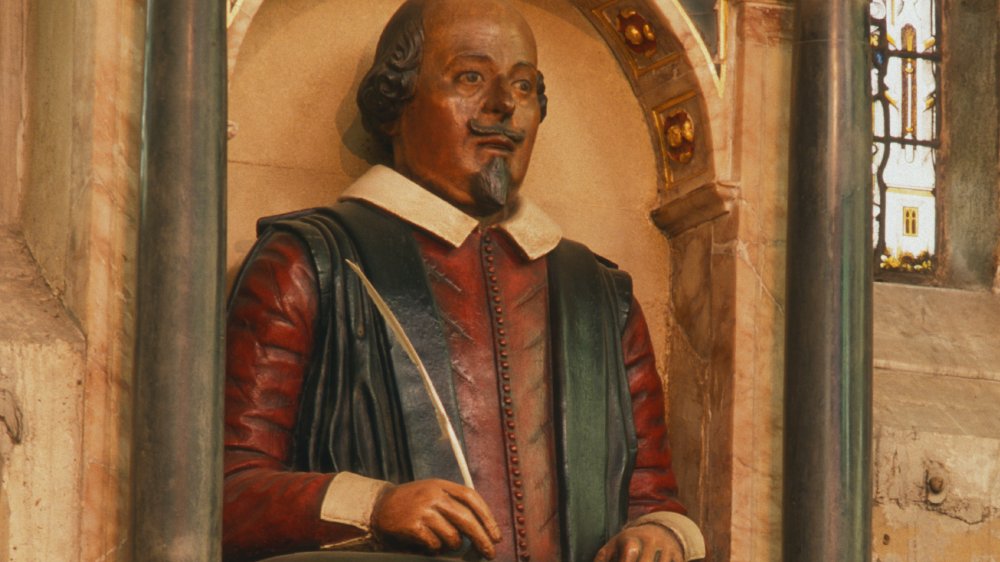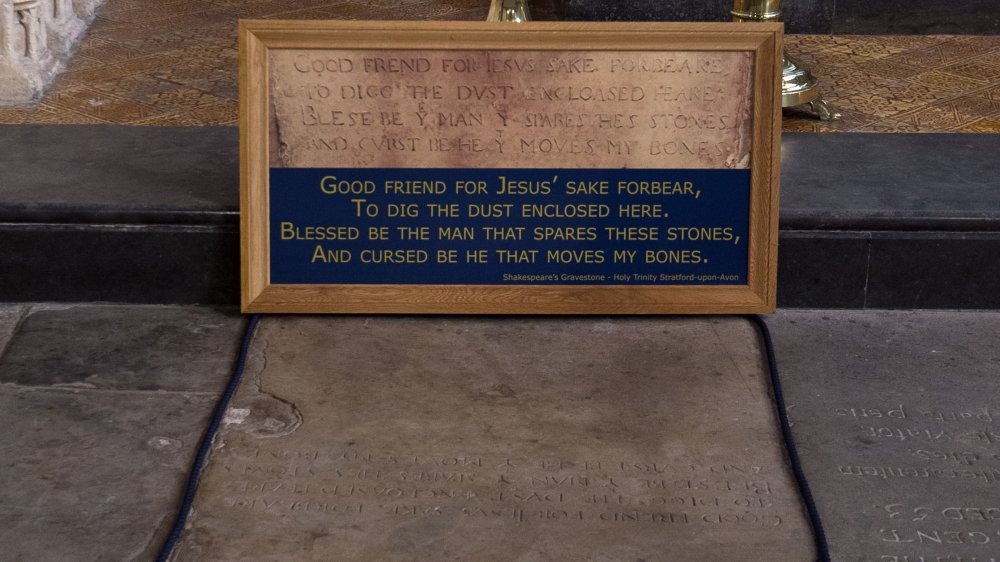These Are The Facts About The Creepy Poem On Shakespeare's Grave
If there's one thing we know about Shakespeare, it's — well, practically nothing. For someone whose name is undeniably part of the English language (and who invented or introduced at least 1,700 words, says the UK's Shakespeare Birthplace Trust) there's a marked paucity of historical information, to the point where some people have suggested that Shakespeare as Shakespeare — genius poet, playwright, actor — didn't really exist. Somebody by that name lived and died, owned property and married and fathered children — but was that a façade for someone else? Maybe. Maybe not.
There's a birthplace. There's a theater where he staged his (or someone's) plays. There are early printed editions of his work. A few legal documents, including a will posted on the UK's National Archives site in which he left his widow, Anne Hathaway, his second-best bed (why second-best? Your guess is as good as ours). The legal document has three examples of Shakespeare's signature — there are only three other known examples of his signature in existence. Just in general, wills are good things to have when someone of means dies. (That's probably not what's meant by "where there's a will, there's a way," though W.C. Fields supposedly said, "Where there's a will, prosperity is just around the corner.")
William Shakespeare died in 1616
And die he did — Shakespeare, that is — on April 23, 1616, at the age of 52. He was buried two days later, on April 25, in Holy Trinity Church in his hometown of Stratford-upon-Avon. The man to whom is attributed theatrical works of history, tragedy, and comedy has these words on the stone, per Mental Floss: "Good friend for Jesus sake forbeare, To dig the dust enclosed here. Blessed be the man that spares these stones, And cursed be he that moves my bones" (emphasis added, because that last part seems pretty important). Oddly, his name doesn't appear on the monument, though as the Shakespeare Trust tells us, it's been generally believed to be The Bard's final resting place since at least 1656.
That whole "cursed be he" part didn't stop researchers from examining the grave's contents back in 2016. As Reuters reports, for the 400th anniversary of William's demise, researchers received permission to take a high-tech look-see at what might actually be contained in that Stratford hole-in-the-ground. (Floor, actually.)
Grave findings
Using ground penetrating radar scanning, researchers, says the BBC, checked out the alleged grave site — which itself is too short to be an actual grave, as ThoughtCo tells us. The findings indicated that Shakespeare (or whoever) wasn't buried in a coffin, but instead wrapped in some kind of burial cloths. All very interesting, but the best part is: his skull is probably missing. "We have an odd disturbance at the head end," said one of the researchers. "It's very very convincing."
It's been rumored for some time — a magazine article in 1879 told the story of grave robbers making off with the cranium in question back in 1794. The Rev. Patrick Taylor, of Holy Trinity, said he was "not convinced that there is sufficient evidence to conclude that his skull has been taken," reported the BBC. "We intend to continue to respect the sanctity of his grave, in accordance with Shakespeare's wishes, and not allow it to be disturbed."
Unlike the thief, or thieves. But maybe they were just — wait for it — trying to get ahead. (You're welcome.)


